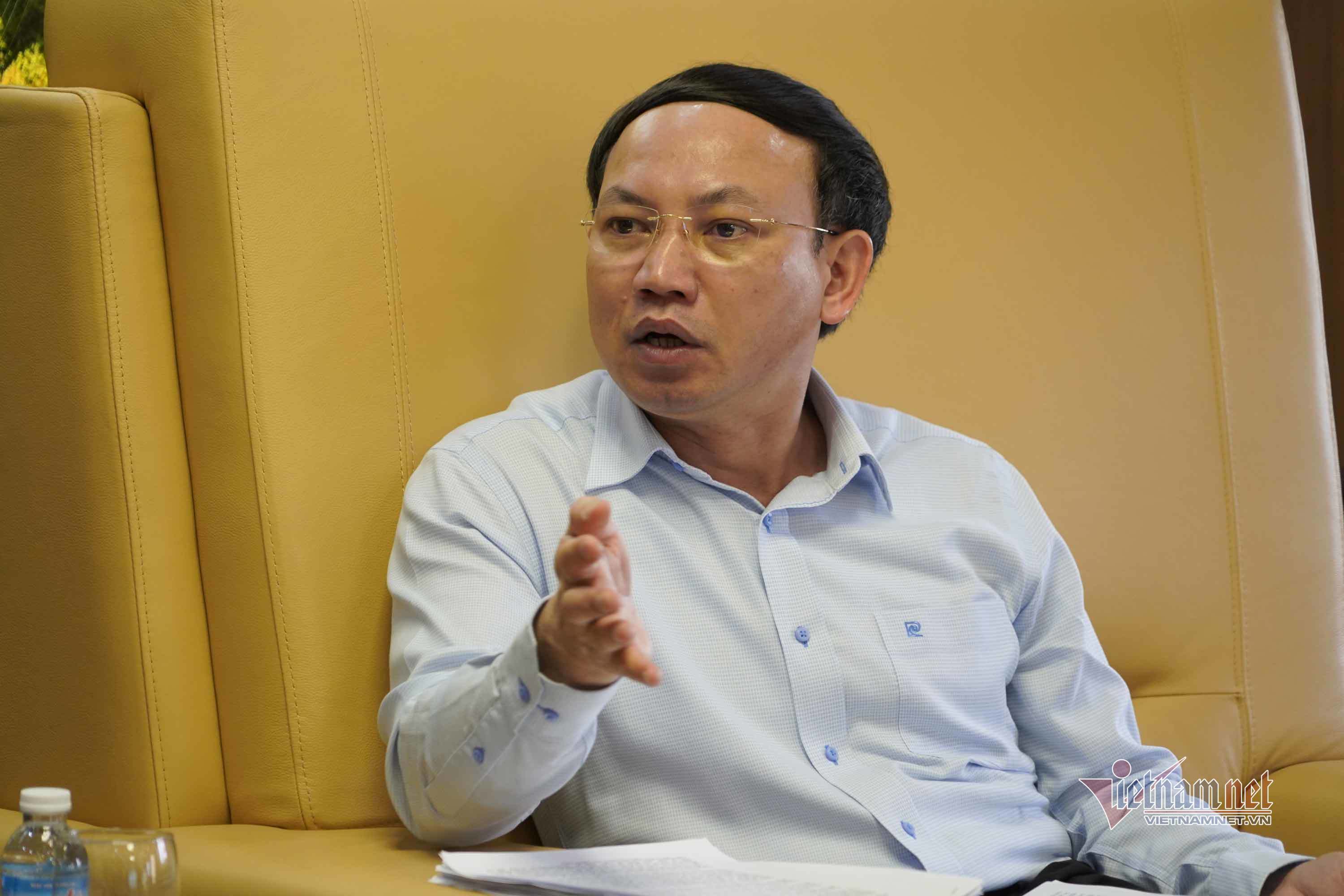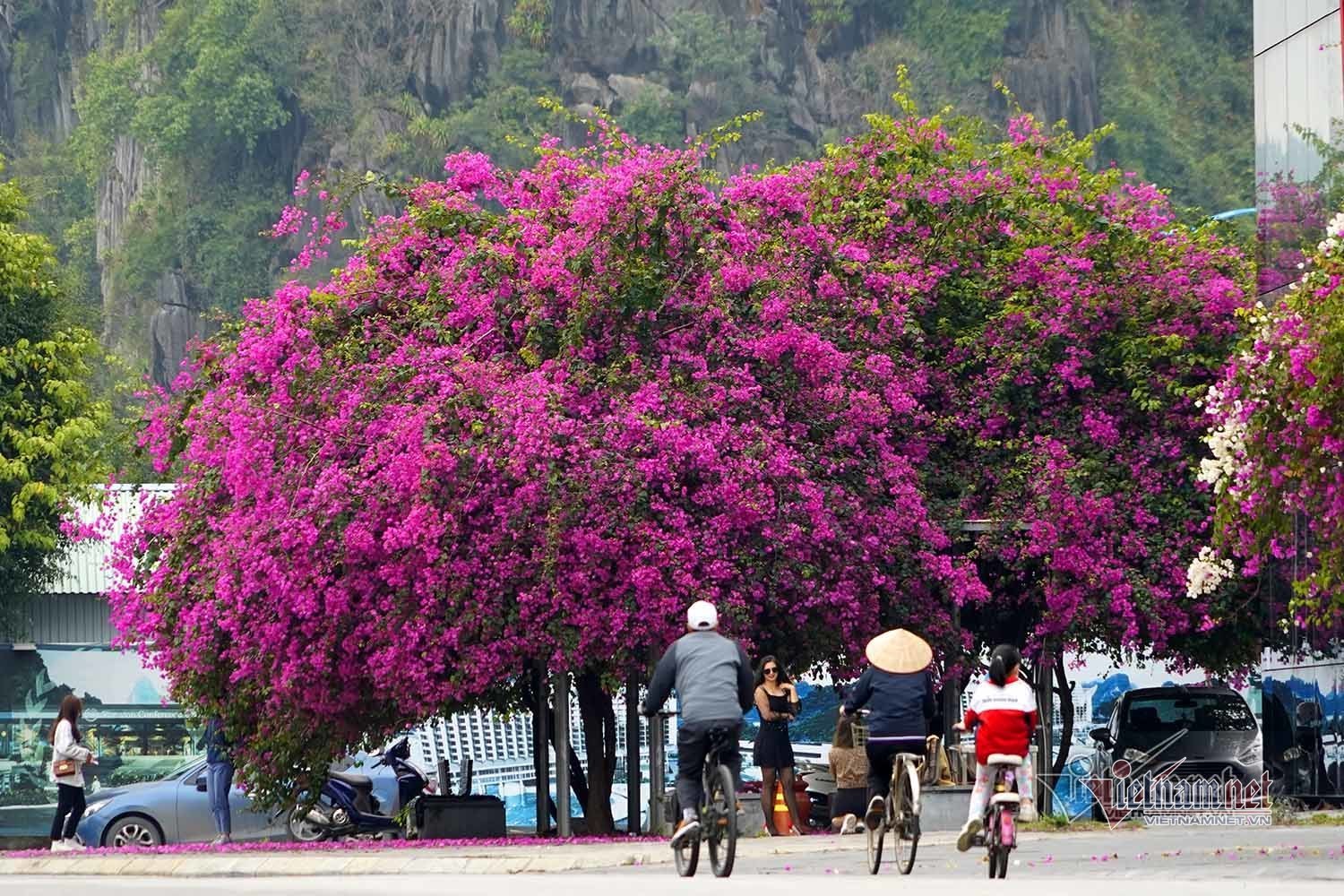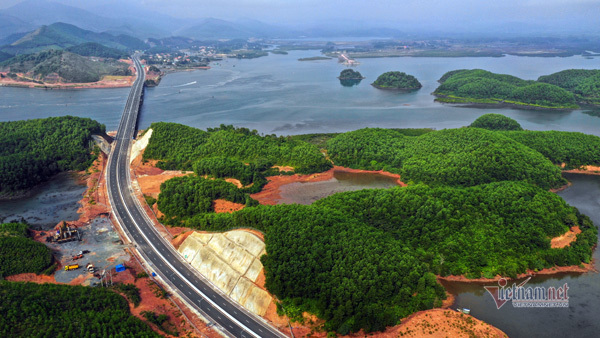Nearly 10 years ago, Mr. Nguyen Xuan Ky, the incumbent Party Secretary of Quang Ninh, was the Chief of the Quang Ninh Provincial Party Committee's Office, who directly assisted the then Party Secretary of Quang Ninh, Mr. Pham Minh Chinh.
When Mr. Chinh, who is now the Prime Minister, raised the policy to transform the growth model from "brown to green", Mr. Ky was also the one who delivered the first invitations to experts and officials to come to Quang Ninh to help the province find a new development path for the area, which was called the kingdom of “black gold” (coal) in Vietnam.
 |
|
Secretary of the Quang Ninh Provincial Party Committee Nguyen Xuan Ky: The Covid-19 pandemic has urged us to think of something else to keep Quang Ninh more stable before hardships. Photo: Pham Cong
|
“When we gave letters of invitations to the local former Party leaders, who grew up from the coal industry, they asked us 'are you okay, why do you have to do this?'. For many generations, Quang Ninh developed based on coal mining and it is still the key industry,” Ky recalled.
In response to the concerns, Quang Ninh’s Party Chief at that time replied: “Yes, you are right. But if it is just that, Quang Ninh cannot develop."
That is the story that paved the way for the development of tourism and services of Quang Ninh, which was set in the 2000s and has been implemented strongly since 2010.
In August 2011, Mr. Pham Minh Chinh was appointed as Secretary of Quang Ninh Provincial Party Committee. On May 24, 2013, he signed a resolution of the Provincial Party Committee on tourism development in the period 2013-2020, with a vision to 2030. This resolution emphasized renovating the growth model, restructuring the local economy, and changing the province’s mode of development from "brown to green" (from coal mining to tourism development).
However, changing from "brown" to "green" did not mean stopping coal mining to make Quang Ninh "cleaner". Instead, the coal industry would be oriented to be cleaner, greener, and cause less conflict with other economic sectors.
It was not a task that was accomplished overnight. For example, Quang Ninh’s Cam Pha city covers a total area of 300,000 hectares, but one third of the land area in the city belongs to the coal mining industry. According to Ky, Cam Pha could not develop that way. “Coal mining area must be reduced. Coal mining on the ground must be minimized,” Ky said.
In Quang Ninh, coal was no longer transported by car or ferry. The provincial government developed a roadmap to gradually reduce open-pit coal mining and increase pit mining. In places where open-cast exploitation was still used, measures to prevent dust pollution and restore the environment had to be applied.
A senior official who visited Quang Ninh 10 years ago still remembers three things: In the rainy season in February, he went to Cua Ong – the land of coal mining – and had to wear plastic boots; otherwise his feet would have been wet; he could not see the green color of leaves as everything was covered by the coal dust; and he could not see anyone in a white shirt on the street.
 |
|
Quang Ninh has been transformed into an ideal destination. Photo: Pham Cong
|
Ten year later, he returned to Quang Ninh, and realized that everything had changed. Most of Quang Ninh's roads were cleaner, the trees green, and people were no longer afraid of wearing white shirts. However, for the transition from “brown to green” to be really thorough, more time is needed.
"Awakened" one more time
Over the past 10 years, Quang Ninh has persisted in strongly innovating the growth model, restructuring the economy, changing the development mode from "brown" to "green" based on the three pillars: nature, people, and culture. However, when the Covid-19 pandemic broke out, Quang Ninh was startled, and had to engage in self-examination.
Quang Ninh suddenly realized that over the past 5 years it was too passionate about developing tourism. At the same time, its neighbor - Hai Phong - had developed robustly, attracting tens of billions of US dollars in foreign investment, compared to only a few hundred million dollars in Quang Ninh.
Quang Ninh officials began to reconsider the strategic directions on developing the manufacturing and processing industry planned by Mr. Pham Minh Chinh when he was still the province’s Party Secretary. He had emphasized that in 2012 and the following years the province would call for investment in the development of a number of industries and industrial products in the fields of information technology, electronics, mechanical engineering, and biology...
It was also the period when Quang Ninh welcomed many big FDI projects, with the $300 million Texhong yarn factory project as an example. This project was granted an investment certificate only 24 hours after the investor had completed the relevant procedures.
"Mr. Pham Minh Chinh clearly pointed out the issues related to the development of processing and manufacturing industry in Quang Ninh," Ky said. "In the past 5 years, Quang Ninh has not added any significant growth engine from the manufacturing and processing industry."
That is understandable. When the transport infrastructure was developed fully, Quang Ninh’s tourism industry boomed. Along with this, local officials could be assured that the provincial economy could be firmly based on the tourism and service sector.
 |
|
Ha Long - Van Don expressway seen from above. Photo: Pham Cong
|
"The Covid-19 pandemic screwed our neck down and Quang Ninh fell," Ky said. "It forced us to think of something else to make Quang Ninh more stable in front of hardship."
The “something else” for Quang Ninh is the manufacturing and processing industry, which is considered the "heart" of industry. “If there was $10-20 billion of foreign investment capital in the manufacturing and processing industry, when the Covid-19 pandemic occurred, these factories were still there, the growth would have been maintained, even though FDI does not add much added value in Vietnam,” Ky said.
Therefore, Quang Ninh had to determine to "walk with both feet": developing services besides agriculture and fisheries, especially on the processing and manufacturing industries.
It is not a coincidence the first resolution issued in November 2020 by the Provincial Party Committee of the new term was Resolution 01/NQ-TU on the rapid and sustainable development of the manufacturing industry in the period 2020-2025, with a vision to 2030.
But learning from the lessons of coal mining, Ky said that Quang Ninh does not want to attract projects that pollute the environment, or affect security and order, but those that use land efficiently, use high technology, and create great added value and high budget revenue. If Quang Ninh lured foreign investment at all costs, it would have to pay a high price.
Luong Bang

The Prime Minister of drastic actions and breakthrough thinking
Mr. Pham Minh Chinh has taken office as the new Prime Minister of Vietnam.